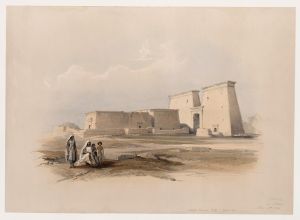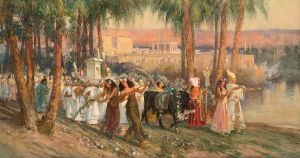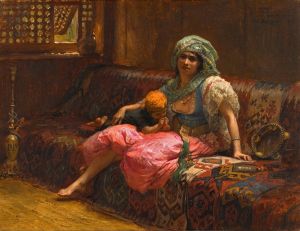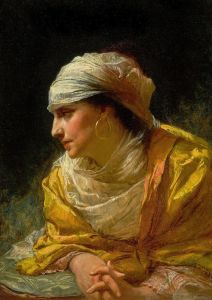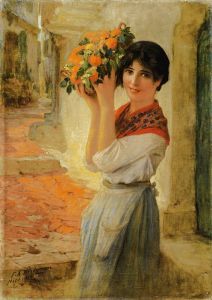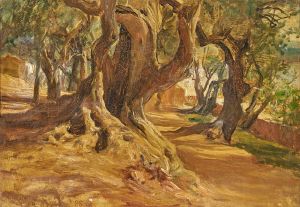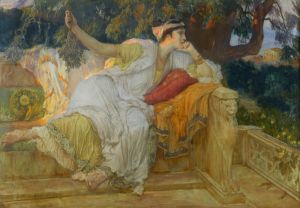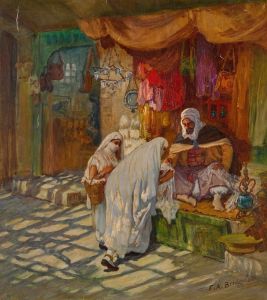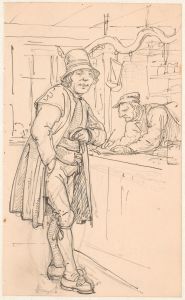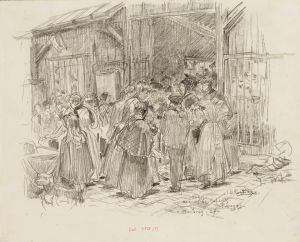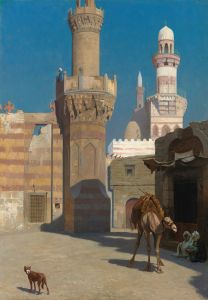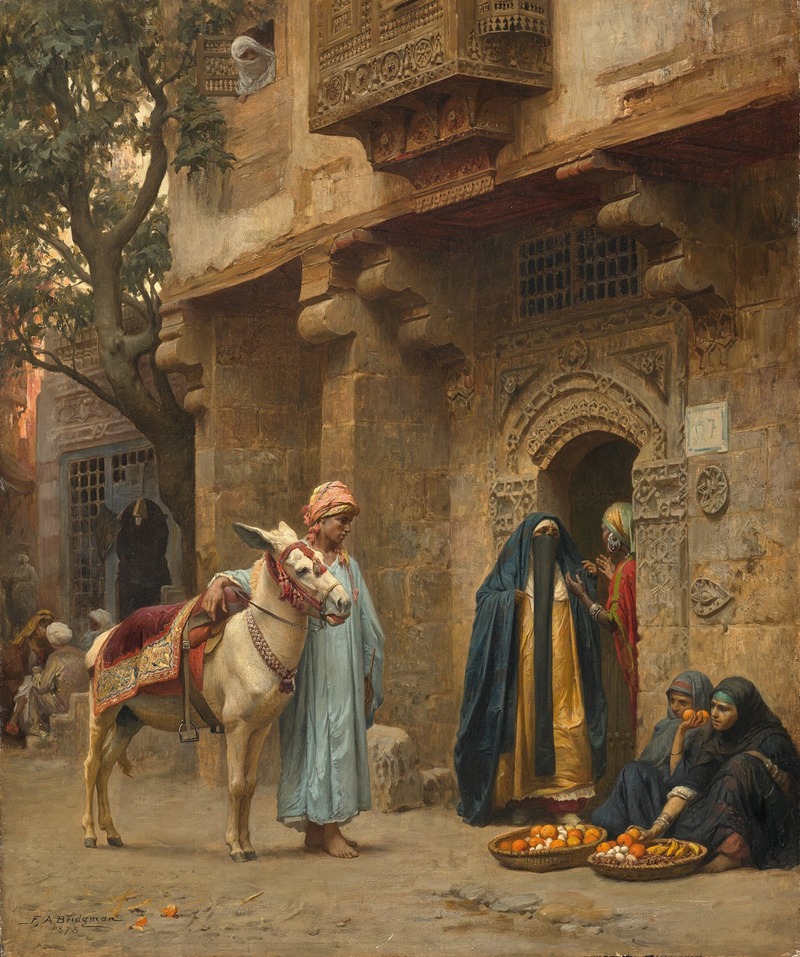
A Cairo Street
A hand-painted replica of Frederick Arthur Bridgman’s masterpiece A Cairo Street, meticulously crafted by professional artists to capture the true essence of the original. Each piece is created with museum-quality canvas and rare mineral pigments, carefully painted by experienced artists with delicate brushstrokes and rich, layered colors to perfectly recreate the texture of the original artwork. Unlike machine-printed reproductions, this hand-painted version brings the painting to life, infused with the artist’s emotions and skill in every stroke. Whether for personal collection or home decoration, it instantly elevates the artistic atmosphere of any space.
Frederick Arthur Bridgman was an American artist known for his detailed and vibrant depictions of Orientalist themes. Born in 1847 in Tuskegee, Alabama, Bridgman became one of the most prominent American artists to work in the Orientalist style, which was characterized by its romanticized portrayal of the Middle East and North Africa. Bridgman spent a significant amount of time traveling in these regions, which greatly influenced his work.
One of Bridgman's notable paintings is "A Cairo Street." This artwork exemplifies his fascination with the daily life and architecture of Egypt, a country he visited during his travels. Bridgman's time in Cairo allowed him to observe and capture the bustling energy and intricate details of the city's streets, which he translated onto his canvas with precision and vivid color.
"A Cairo Street" is a testament to Bridgman's skill in rendering architectural elements and human figures with a high degree of realism. The painting typically features a busy street scene, filled with local inhabitants engaged in various activities. Bridgman's attention to detail is evident in the way he captures the textures of the buildings, the clothing of the figures, and the play of light and shadow across the scene. His use of color is both vibrant and subtle, bringing to life the atmosphere of a Cairo street in the late 19th century.
Bridgman's work is often noted for its ethnographic accuracy, a result of his extensive travels and keen observation. He was meticulous in his depiction of the cultural and social aspects of the regions he visited, striving to present an authentic representation of the people and places he encountered. This dedication to authenticity is a hallmark of his Orientalist paintings, setting them apart from the more fantastical interpretations of the genre by other artists of the time.
In addition to his technical prowess, Bridgman's paintings are appreciated for their narrative quality. "A Cairo Street" invites viewers to imagine the stories of the individuals depicted, offering a glimpse into the everyday life of a bustling Egyptian city. This narrative element, combined with his detailed and realistic style, makes Bridgman's work both engaging and informative.
Frederick Arthur Bridgman's contributions to the Orientalist movement were significant, and his works continue to be studied and admired for their artistic and historical value. "A Cairo Street" remains an important piece within his oeuvre, reflecting both his personal experiences in Egypt and his broader interest in the cultures of the Middle East and North Africa. Through paintings like this, Bridgman helped to shape Western perceptions of these regions during the late 19th and early 20th centuries, leaving a lasting impact on the art world.






